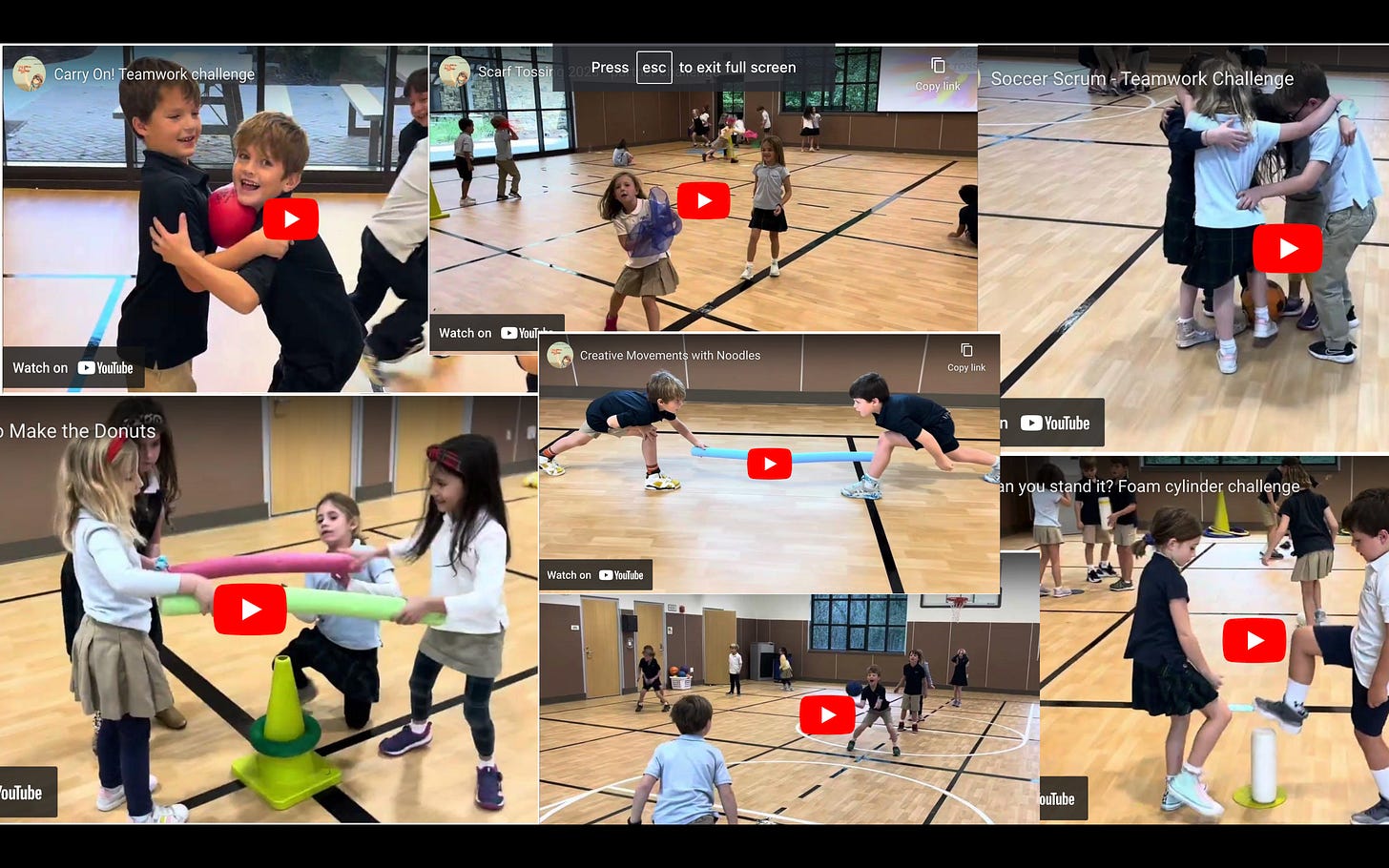Team building with students improves productivity, boosts motivation, increases collaboration, encourages creativity, and enriches communication.
As in most physical education programs, it has been a tradition for my team to kick off the school year with two weeks of team building and cooperative activities. Not only is it the perfect way to get to know students, but it also encourages them to communicate (talk to each other – a dying art!) and problem-solve in small, medium, and large-sized groups. Through these cooperative activities, we can determine which students work well in group settings and those who may have difficulties within this dynamic.
Teamwork should be discussed and encouraged consistently throughout the year. After all, practice improves performance, right? For this reason, I once again took a deep dive into partner and small group cooperative challenges with my 1st-grade classes this week.
Here are 7 of our simple and fun teamwork challenges.
Soccer Scrum
How many times can your group of five move the ball back and forth across the gym in three minutes?
Creative Noodle Movements
How many exercises and movements can you and your partner create using two noodles?
Pass, Pivot, Catch Cooperative Relay
Time to Make the Donuts
Groups of 4 work to move the donut from one cone to the other using noodles. If the donut falls, the students complete 5 jumping jacks while holding the ends of each noodle.
Carry On!
How many ways can you and your partner carry the ball across the floor without using your hands? Remember, the ball must be touching both of you at all times.
Can You Stand It?
How many spots can you stand the cylinder on using only your feet? Don’t forget! Each partner must be touching the cylinder.
Scarf Tossing
How many tosses does it take you and your partner to cross the gym and back?
Whether it’s building a hula hut in P.E., passing a ball on a field, or completing a team project in class, team building skills are indispensable tools for children to possess. Like any lesson, we can teach our students the benefits of sharing ideas, communicating thoughts, and working as a group, but ultimately it is the children that will connect and use those skills in the real world.





